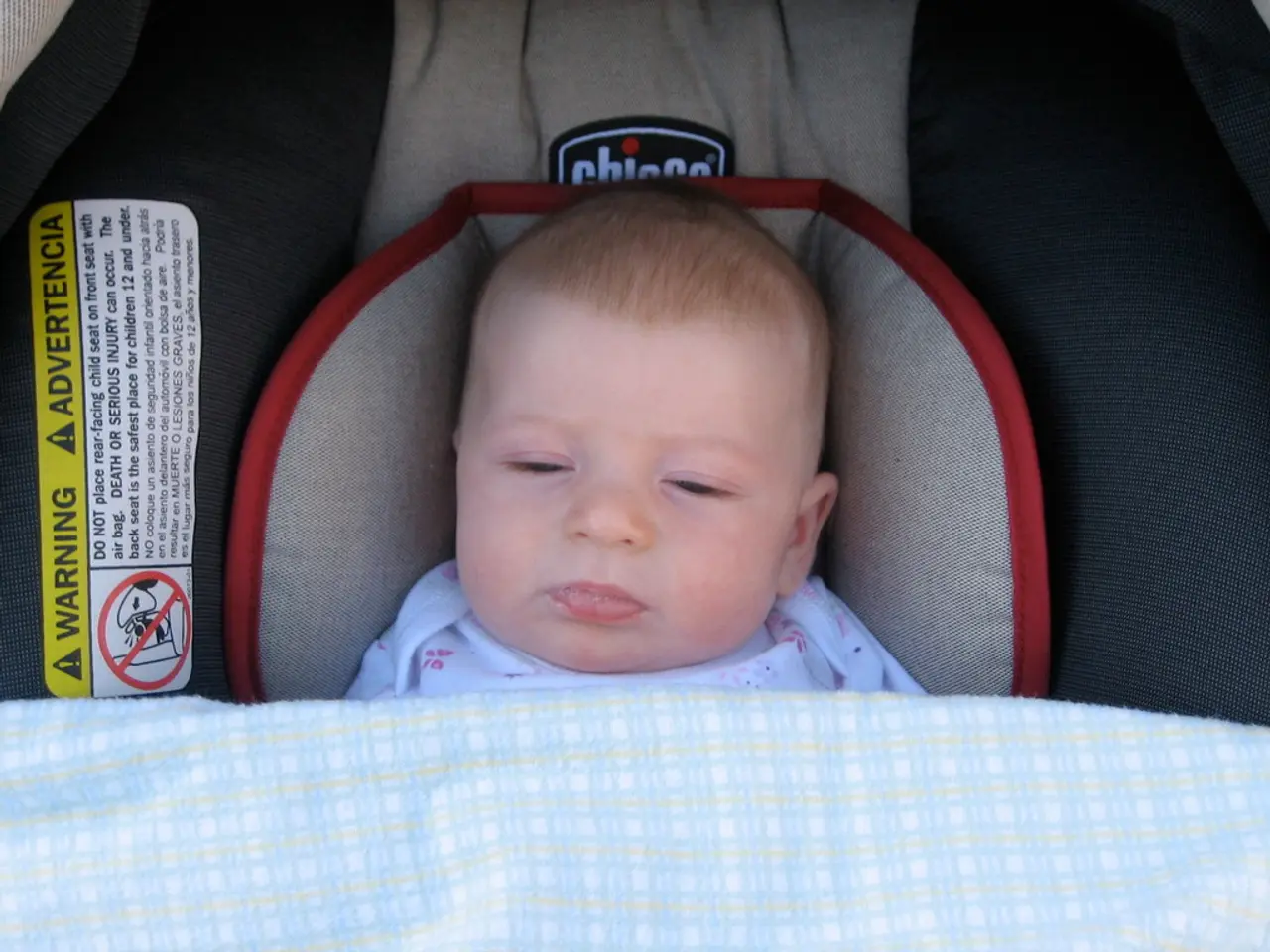Securing Infant's Comfort and Security: Guidelines for Wrapping Babies Securely and Safely
Swaddling, a practice that has been used for centuries in various cultures, can offer numerous benefits for both parent and baby. However, it's crucial to ensure that swaddling is performed safely to prevent any potential risks. Here are some recommendations for safe swaddling techniques.
Choosing the Right Swaddling Blanket
When selecting a swaddling blanket, opt for a lightweight and breathable fabric, such as cotton, bamboo, or merino. The blanket should be large enough to completely wrap your baby, but not too tight. Consider swaddles with velcro or snaps for a secure fit, and avoid blankets with loose threads or decorations that could pose a choking hazard.
Room Temperature and Monitoring
Maintain a room temperature between 68-72°F to keep your baby comfortable during swaddling. Use a thermometer to monitor the temperature and adjust accordingly if needed.
Safe Swaddling Guidelines
- Place the baby on their back to sleep while swaddled to reduce the risk of sudden infant death syndrome (SIDS). Never place a swaddled baby on their stomach or side.
- Use a light, breathable cotton or natural fiber blanket to avoid overheating and allow airflow. Avoid synthetic fibers like fleece.
- Do not swaddle too tightly. The swaddle should be snug enough to secure the baby’s arms but loose enough to allow movement of the hips and knees to prevent hip dysplasia and circulation issues.
- Keep the baby's face uncovered at all times to prevent suffocation or overheating.
- Allow access to baby's hands whenever possible for natural self-soothing (e.g., sucking on hands), unless nail trimming is required to prevent scratches. Avoid restricting hands with mittens during swaddling, as it affects comfort.
- Stop swaddling as soon as the baby shows signs of trying to roll over to prevent the risk of being trapped face down and suffocating.
- Monitor the baby's temperature for signs of overheating, like sweating, flushed cheeks, or hot skin.
- Avoid weighted swaddles and heavy blankets, as they increase the risk of breathing difficulties and overheating.
Alternatives to Swaddling
If you prefer, you can use sleep sacks that allow safe hip movement and access to arms/hands, or employ skin-to-skin contact with a light blanket for warmth.
Transitioning Out of Swaddling
As your baby starts to show signs of rolling over, it's time to stop swaddling. If your baby consistently breaks free from the swaddle, it may be a sign to transition out of it. Once your baby can self-soothe or starts showing a preference for arms-free movements during sleep, discontinue swaddling. Consult your pediatrician for guidance on when and how to transition your baby out of swaddling.
In summary, safe swaddling prioritizes the baby's back sleeping position, light and breathable fabric, loose hips, uncovered face, and ceasing swaddle use at rolling onset, with close monitoring for overheating and comfort. By following these guidelines, you can ensure a safe and comfortable swaddling experience for your little one.
- To prevent the risks associated with swaddling, it's essential to choose a lightweight and breathable fabric swaddling blanket, such as cotton, bamboo, or merino.
- Maintaining a room temperature of 68-72°F ensures a comfortable environment for your baby while they are swaddled.
- For a secure fit, consider swaddles with velcro or snaps instead of blankets with loose threads or decorations that could pose a choking hazard.
- To reduce the risk of sudden infant death syndrome (SIDS), always place a swaddled baby on their back to sleep and never on their stomach or side.
- When swaddling, ensure the swaddle is snug enough to secure the baby’s arms but loose enough to allow movement of the hips and knees to prevent hip dysplasia and circulation issues.
- For the baby's safety, keep their face uncovered at all times, ensuring they do not suffocate or overheat.
- Monitor the baby's temperature for signs of overheating, like sweating, flushed cheeks, or hot skin, to maintain their overall health and wellness.




